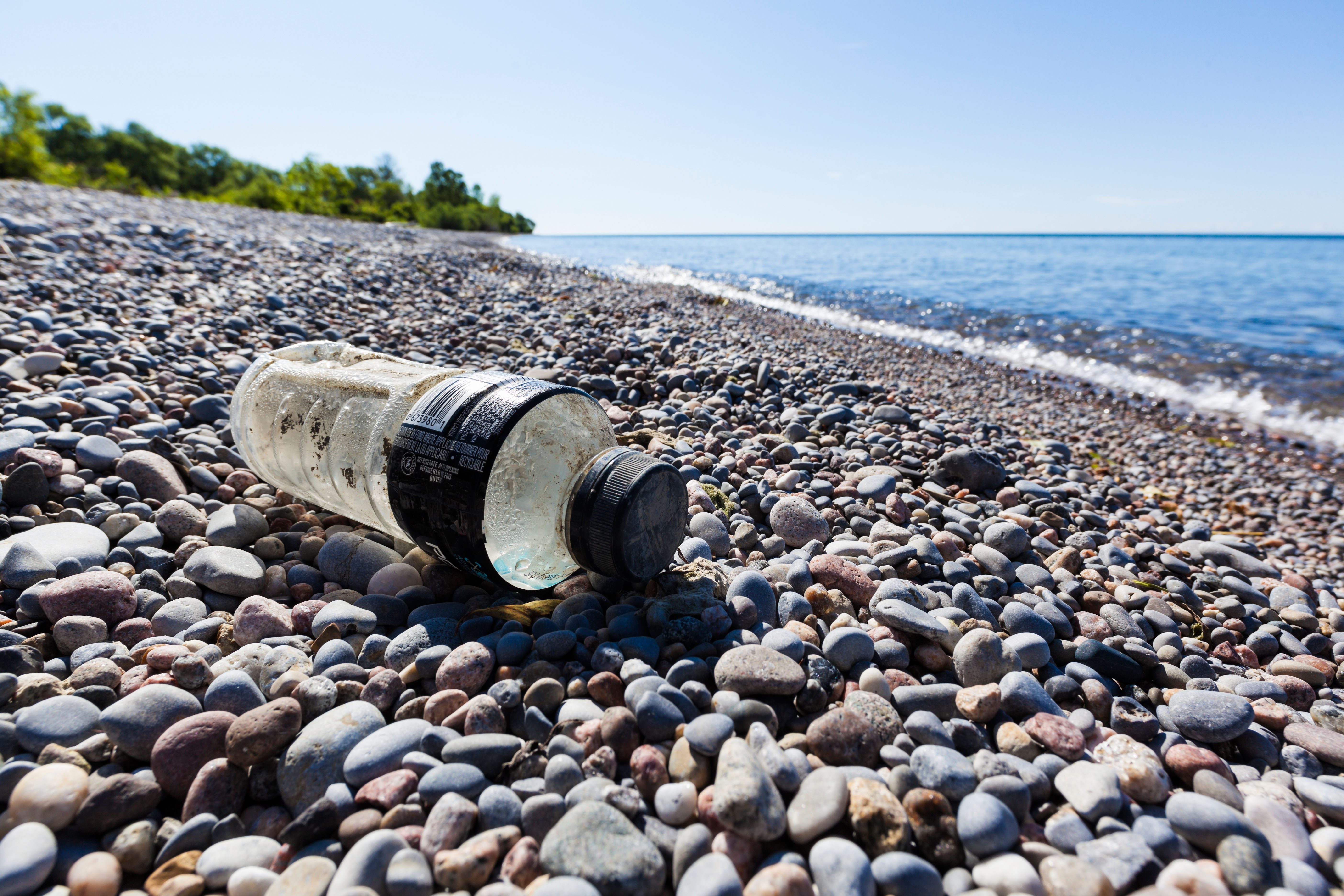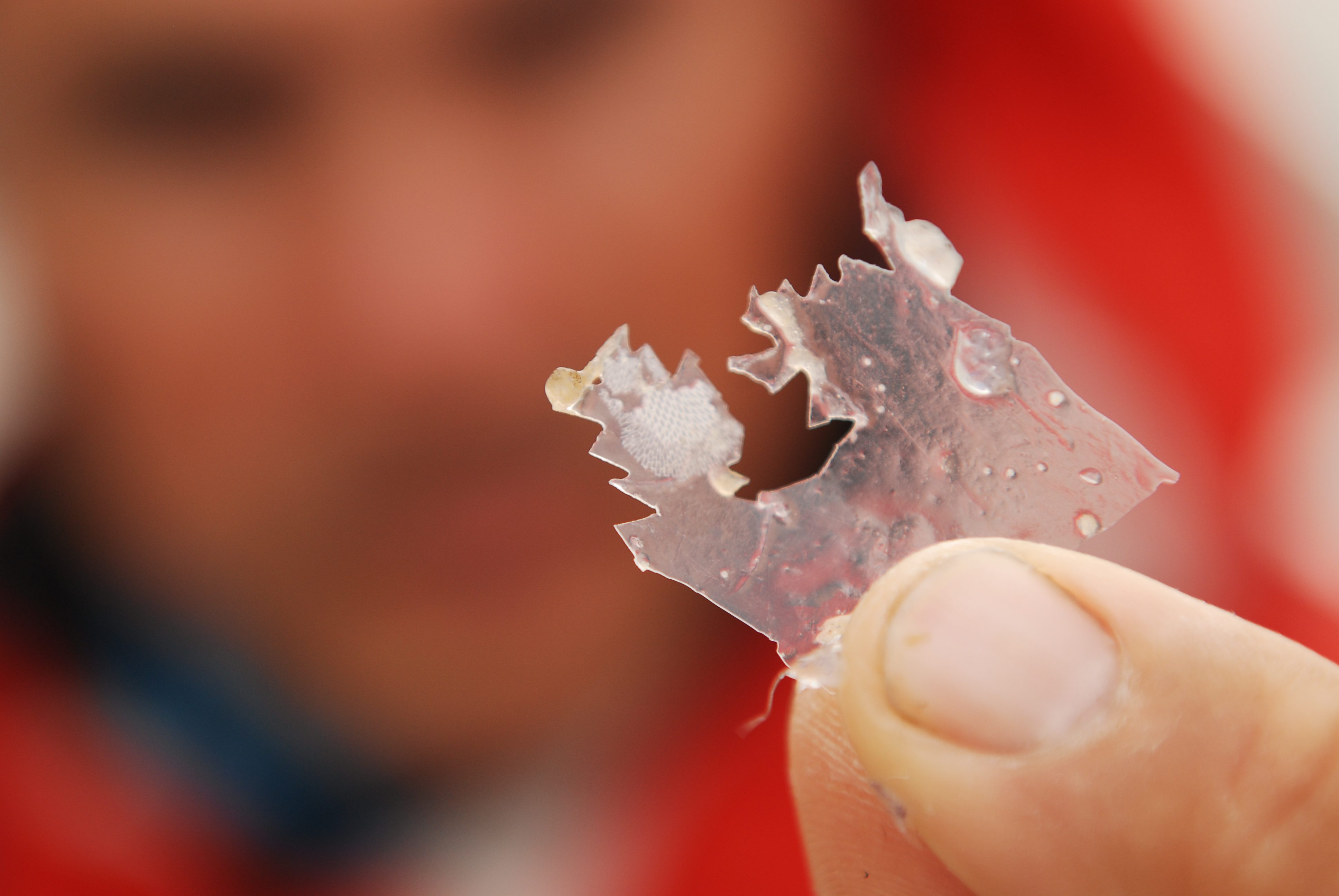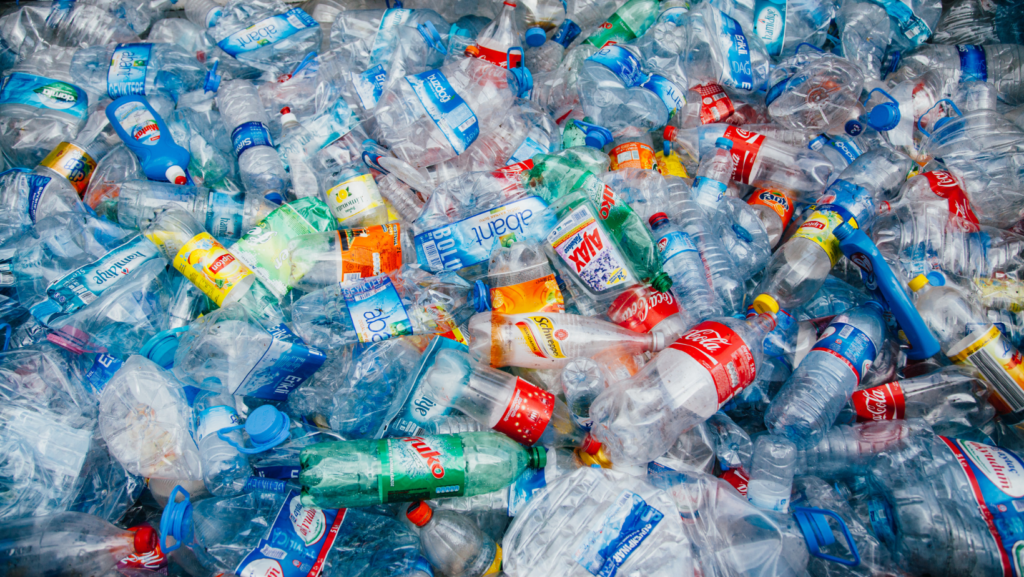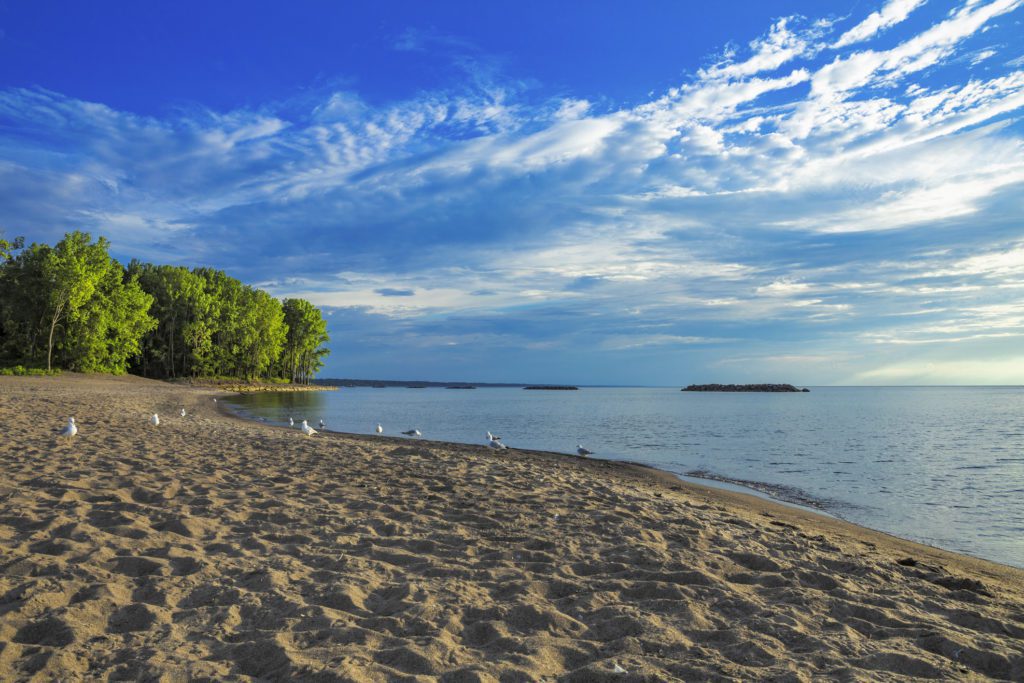How much plastic pollution do you think is in the Great Lakes? The numbers may shock you.
Nearly 80 per cent of the litter in the Great Lakes Region is plastic, and a recent study estimates that 10,000 metric tonnes (or 22 million pounds) of plastic get dumped into the Great Lakes every year. According to the researchers, this study is the first picture of the true scale of plastic pollution in the lakes, which are the largest source of surface freshwater in the world.
There’s no doubt about it – our lakes are drowning in plastic pollution. We must act now to protect our waterways from the damaging effects of plastic.
Single-use plastic bottles, like water bottles, are a significant source of plastic pollution. In Ontario, only half the plastic bottles sold in the province are collected for recycling. That means one billion bottles end up in landfills, or littered in the environment every year.
But what about the Blue Box? Ontarians love their colourful curbside collection program, but it isn’t working well enough. The province is one of only three Canadian jurisdictions without a deposit return program for plastic bottles, and as a result has the lowest plastic bottle recycling rate in the country. Other provinces and territories consistently achieve collection rates of 72 to 95 per cent! The Blue Box is failing us, especially when compared to a deposit return program.
Deposit systems work because they put a price on plastic pollution, and incentivize proper disposal. And Ontarians know firsthand that deposit return programs work. Bag It Back, Ontario’s deposit return program for wine, beer and liquor bottles achieves return rates of 82 per cent, while the Blue Box collects only 50 per cent of the non-alcoholic beverage containers sold in the province.
The impacts of our pollution problem shouldn’t be underestimated. Plastic bottles, lids, and other packaging end up buried in the sand, tangled in shoreline vegetation, and floating in our lakes and waterways. But it’s more than just an eye sore. Animals get entangled in larger plastic items (like fishing wire and six-pack rings), and unintentionally ingest smaller plastic particles which can lead to starvation and other harmful impacts.
So what can we do to keep plastic out of the environment and the Great Lakes?
- Take action and urge Ontario to fix its bottled water problem, and put a deposit on single-use beverage containers.
- Take back the tap. The majority of Canadians have access to some of the best drinking water in the world, right from their taps! Choosing to use a refillable bottle instead of buying pricey and polluting bottled water can significantly reduce your plastic footprint.
It’s time to turn the plastic tide in the Great Lakes.










